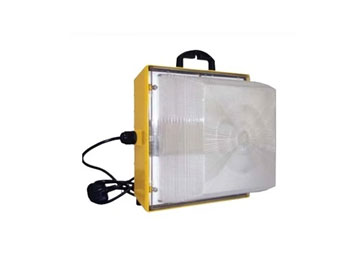Construction / Portable Lighting is used in applications that require illumination in locations where conventional lighting options are difficult to install or use. This includes areas where a normal power source is unavailable or where there is a need for durable lighting that can be easily moved to different locations.
Where Portable Lighting used
Construction / Portable Lighting is ideal for applications that require the ability to withstand the conditions associated with a construction or job site. These conditions include exposure to dust, water, and vapor as well as physical impacts from other equipment or people. They have numerous applications across a variety of areas such as building sites, garages, roadways.
Different types of Construction / Portable Lighting
There is a wide variety of construction / portable lights that can be used for many types of applications. These include flood lights, string lights, roadway warning lights, dock lights, magnetic lights and hanging lights. Some of these lights have ingress protection ratings that provide information regarding what kind of environment that they are suitable for.
- IP65 – protection against dust and water projected by a nozzle.
- IP66 – protection against dust and water projected by a jet.
- IP67 – protection against dust and when the enclosure is immersed in water (for specified time and pressure)
Benefits of LED Construction / Portable Lighting?
LED lighting technology has developed to the point that it can overcome most all the drawbacks of the technologies previously listed here.
- Lighting quality is much better in terms of color rendering, color temperature and lumen output (compared to wattage used).
- They have a much lengthier lifetime which means that the lights need to be replaced less often than other types. This is particularly helpful when used at a remote job site.
- Although LED lighting is more costly at the outset upon point of purchase, costs are more than made up over the long term because they utilize much less energy than conventional lights. This saves on utility costs and battery life over time. They also do not waste energy emitted as heat.

